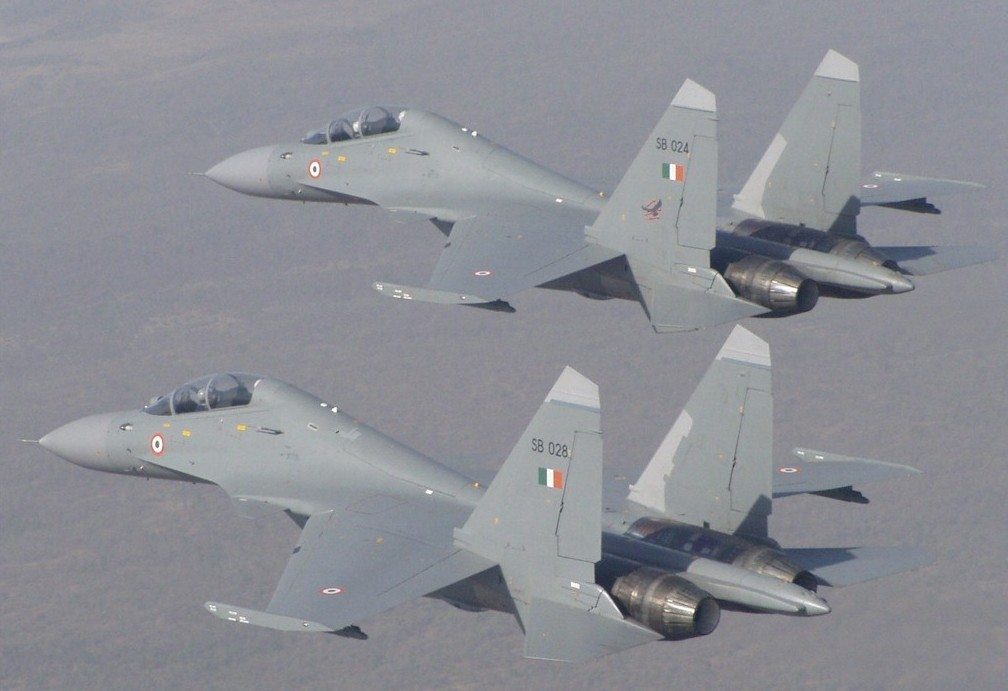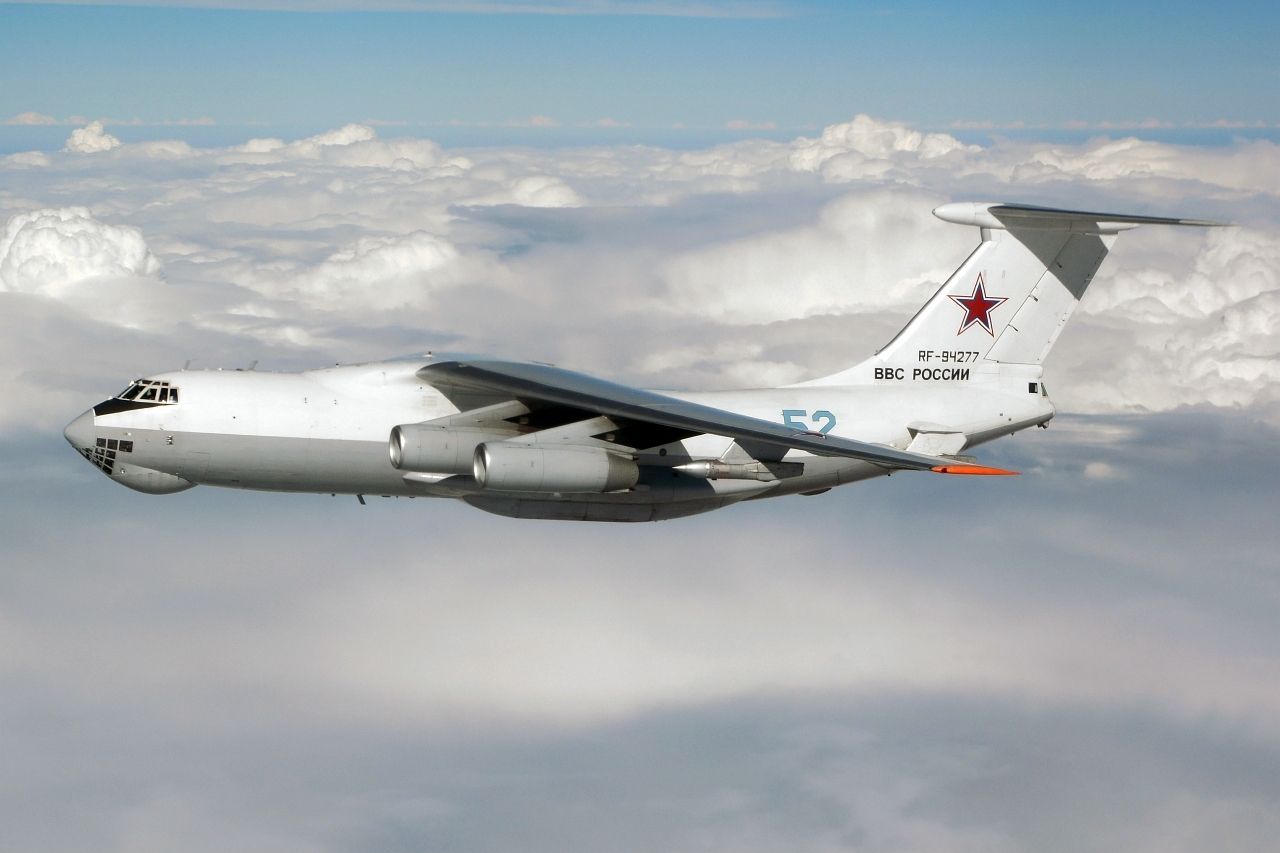India is boosting negotiations with Russia on the upgrade of its Sukhoi Su-30MKI (NATO reporting name: Flanker-H) multirole fighter jets, according to a source in the Russian defense industry.
“Due to the postponement of the FGFA (Fifth-Generation Fighter Aircraft) joint program, the Indian Ministry of Defense (MoD) has apparently revealed its intention to upgrade Su-30MKI combat aircraft in order to turn the planes into the fifth-generation fighter jets. A Russian military-industrial delegation visited New Delhi in early July to forge the upgrade strategy and to discuss it with the Indian colleagues. We suppose that the draft of the new program will have been hammered out by the year-end.
“The preliminary name of the enhanced fighter is ‘Super Sukhoi’. The Indian MoD is planning to upgrade almost all 272 ordered Su-30MKI aircraft to the ‘Super Sukhoi’ level in efforts to increase the combat capabilities of the fighters. I should note that the new program will [not] cancel the FGFA project. At present, India intends to get both FGFA and ‘Super Sukhoi’ fighter jets. If the relevant projects have been implemented to full extent, the Indian Air Force (IAF) will be one of the strongest in the world,” the source said.
He added that the proposed cost of the ‘Super Sukhoi’ program is significantly less than the one of the FGFA. “Russia and India are going to spend about USD25 billion to deliver the FGFA fighter jets to the IAF, while the rebuilding of all 272 Su-30MKI fighters is supposed to cost about USD8 billion”, the source said.
However, the reallocation of funds may slightly harm the FGFA program, he added. “Such drastic modernization of the Su-30MKI aircraft may slow down the development of the FGFA fighter. Both sides should consider the financial limitations. Nevertheless, one can describe FGFA as an aircraft being designed from scratch, while the basic Su-30MKI planes have been almost delivered to the IAF. The upgrade of the Sukhoi fighters will allow sustaining the combat readiness of the service in several decades to come. Hence, the implications of the decision to earmark funds to both program are not as apparent as the economic pundits suppose,” the source emphasized.
He added that the Indian intention to upgrade Su-30MKIs in a drastic manner is a rational one. “The Flanker-H multirole fighter has a great potential in the modernization. It has an advanced airframe and a modular structure of the main components. I would not suppose ‘Super Sukhoi’ to be a genuine fifth-generation aircraft, but its combat performance can be radically increased. The upgraded plane is going to leave behind almost all modern aircraft in terms of cost-effectiveness ratio. It would offer a great capability for a relatively small chunk of money,” the source said.
According to him, FGFA and ‘Super Sukhoi’ will be different aircraft. “FGFA has several advantages over the upgraded Su-30MKI, namely, improved stealth capabilities, internal weapon bays, integrated electronic warfare (EW) suite, state-of-the art engines, and an advanced software. ‘Super Sukhoi’ cannot be rebuilt into a fully stealth aircraft. Yes, we are planning to enhance the plane`s stealth. However, you should not delude into thinking that the upgraded Su-30MKI would be an almost invisible aircraft. It is a “Super Sukhoi’, not a ‘Super Stealth’ aircraft.
“Such basic components as the airframe will retain their structure, be sure. India has demanded that Russia save the Su-30MKI`s legendary reliability, let alone high combat performance. I see the future of the IAF`s combat aircraft fleet as a mixture of the FGFA stealth planes and the ‘Super Sukhoi’ multirole fighters. You should consider that Moscow and India have committed to the FGFA program, having earmarked billions of dollars in order to support it. At the same time, the contract for “Super Sukhoi’ planes has yet to be signed by both sides. Hence, the IAF is intending to get both planes,” the source said.
The ‘Super Sukhoi’ aircraft is supposed to receive an advanced glass cockpit, long-range guided weapons, a state-of-the-art avionics, and a radar with an active electronically scanned array (AESA), the source pointed out. “The IAF is planning to integrate the air-launched variant of the BrahMos cruise missile jointly developed by Russia and India with the ‘Super Sukhoi’ aircraft. The plane is supposed to get long-range air-launched missiles with an infrared guidance system interfaced with an advanced software. India is planning to power the jet with top-performing engines to reduce the number of potential failures,” he added.
The contract between Moscow and New Delhi for the upgrade of Su-30MKI combat aircraft to the ‘Super Sukhoi’ variant has yet to be signed, the source emphasized. “The sides have not defined the volume of works and the number of the planes to be rebuilt. Once the relevant agreement is ratified, the Russian defense industry will make a demonstrator to be upgraded in India by the Hindustan Aeronautics Limited (HAL) company. Hence, both sides will contribute to the development of the ‘Super Sukhoi’ combat aircraft,” the source said.
According to him, the allocation of funds remains the main hindrance in this area. “Frankly speaking, we do not suppose that the IAF will be able to put up money for both programs to full extent. The service may be required to scale down its activity in the aircraft upgrade segment despite the urgent needs,” the source pointed out.
The modernization of the Air Force seems to be a bread-and-butter issue for the national MoD, as the present number of the operational fighter squadrons (25 units) does not meet the goal set by the Indian military authorities (45 units) at all. The acquisition of modern combat aircraft is a vital procedure given the complex geopolitical situation and the Indian-Pakistan tensions.
The implementation of the FGFA program has slowed down, while the contract for 272 Su-30MKI aircraft has been almost implemented. The buying of the Rafale fighters developed by the French Dassault Aviation aerospace company is not [as alluring] as it was several months ago. India needs combat capable and robust fighters, being able to eliminate the latest fourth-generation combat aircraft. Hence, the acquisition of an additional batch of relatively inexpensive Su-30MKI jets would be the best option. The ‘Super Sukhoi’ upgrade will drastically increase the combat capabilities of the Flanker-H planes.
According to the Military Balance 2016 report issued by the International Institute for Strategic Studies (IISS), the IAF operates 791 combat aircraft. This fleet includes 43 MiG-29 (Fulcrum), 12 MiG-29UPG (Fulcrum-D), 123 Jaguar IB, 80 Jaguar IS, 10 Jaguar IM, 31 MiG-21bis (Fishbed), 115 MiG-21 (Bison), 40 MiG-21M/MF (Fishbed), 124 MiG-27ML (Flogger-J), 40 Mirage 2000E/I/H, 225 Su-30MKI, 7 MiG-29UB (Fulcrum), 1 Tejas, and 40 MiG-21U/UM (Mongol) jets.
The Indian Navy’s (IN) Naval Aviation operates 43 fighters, including 33 MiG-29K/KUB (Fulcrum-D), 2 Sea Harrier T-4N/T-60, and 8 Sea Harrier FRS 1/Mk.51 planes. Hence, the combat aircraft fleet of the IAF urgently needs unification. It includes a large number of ageing Cold War-era fighter jets. For instance, New Delhi remains the largest operator of the Soviet MiG-21 and MiG-27 planes in the world. The phasing out of the obsolete jets and replacing them with two modern types, namely FGFA and ‘Super Sukhoi’ will drastically increase the combat performance of the IAF.
It should be noted that the IN also faces several troubles in the area of combat aircraft. According to the Comptroller and Auditor General of India (CAG), the service has seen the multiple failures of the RD-33MK jet engines integrated with the MiG-29K/KUB fighters, as well as the problems related to the planes’ airframes and fly-by-wire systems.
“The serviceability of the MiG-29K/KUB combat aircraft is extremely low, ranging from 15.93% to 37.63% for MiG-29Ks and from 21.30% to 47.14% for MiG-29KUBs,” the CAG said. However, the aforementioned low serviceability level is supposed to have been caused by the unskilled level of the Indian maintenance system.











